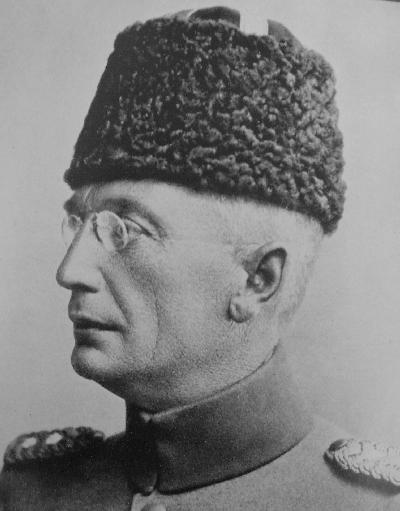Topic: BatzP - Rafa
The Battle of Rafa
Sinai, 9 January 1917
Friedrich Freiherr Kress von Kressenstein Account

The following is an extract from General Friedrich Freiherr Kress von Kressenstein, Mit den Tèurken zum Suezkanal, 1938,, about the role of the Turkish forces at the Battle of Rafa, Sinai, 9 January 1917.
Rafa
The 9 January brought us a new slap to the face. The British gazed upon our garrison at Rafa. It consisted of the staff and six companies of the 31st Regiment, a German-Turkish machine gun company and a mountain battery. The camp was constructed similar to that at Magdhaba by a ring of interconnected redoubts with good fields of fire. Unfortunately it was not possible to add on any barbed wire entanglements. We let the defences stand despite the experiences of Magdhaba, because its position was substantially stronger than that at Magdhaba, above all however, because twenty kilometres away, at Shellal, the 160th Regiment could render timely assistance to the garrison at Rafa. Our superiors wanted it, and Colonel Reffed Bey, who was responsible for the security of the border, had driven to Jerusalem the day before, was out of contact because the telegraph lines had been damaged by a storm and not been repaired. Regardless of this, without any instruction, the Regimental Commander could stand on a height at El Shellal and clearly hear the noise of canon fire from Rafa and hurry to fulfil his mission. The commander of the 160th Regiment did nothing until an aeroplane brought him instructions at 1pm to bring march to Rafa to engage the enemy. By 3pm, the Regiment finally began its march. Until that Regiment became visible the fate of the courageous defenders at Rafa was already sealed.
The commander of the Desert Column, Lieutenant General Sir P. W. Chetwode, was with the Anzac division, Camel Corps, 5th Mounted Brigade and Light Patrol Car Unit No 7 - altogether twelve cavalry regiments, three battalions of cameleers and five batteries - on 8 January left El Arish for a night march after our observation pilot had finished his evening patrol. With an attack on the Turkish positions in a similar manner which made Magdhaba a tactical success – they surrounded Rafa with the mounted troops and then after one half-hour fire preparation from its five batteries, began a concentric attack against the Turkish position. Despite their heavy numeric superiority the British could advance over the area very slowly. Once the ammunition ran out for the German controlled machine gun lines, the New Zealanders succeeded in taking the Turkish redoubt by storm. The other redoubts held out for a little time but by 5pm the whole garrison was in the hands of the British. Only a few of the courageous crew could escape from the capture; the total captured came to about 1200 men - including the regiment commander. The British paid for their success with 71 dead and 415 wounded.
On receiving the news that the 160th Regiment was coming from the direction of Shellal, General Chetwode had already decided to break off the combat. As he was writing up the retreat instructions, he received the message that the New Zealanders had succeeded in taking one of the Turkish redoubts by storm. After the fight was over, the British returned immediately back to El Arish.
Further Reading:
The Battle of Rafa, Sinai, 9 January 1917
The Battle of Rafa, Sinai, 9 January 1917, Roll of Honour
The Palestine Campaign, 1917 - 1918
Battles where Australians fought, 1899-1920
Citation: The Battle of Rafa, Sinai, 9 January 1917, Friedrich Freiherr Kress von Kressenstein Account



